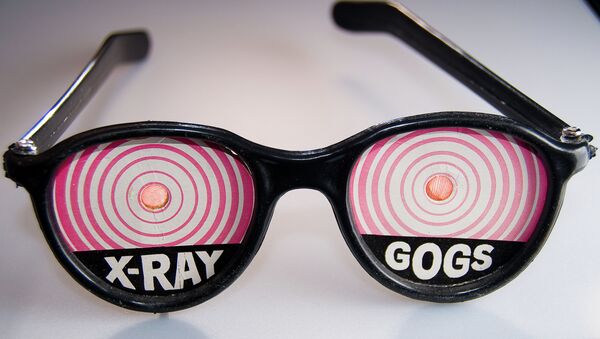Early on in “The Fifth Element,” – a highly recommended sci-fi action flick – a group of NYPD officers search a futuristic apartment building. They’re looking for someone, and rather than knock on doors, apartments of the future come equipped with police friendly cameras to tell them who’s inside. Dangerous criminal or innocent civilian. Human Bruce Willis or…alien redhead.
Here in the present, many law enforcement agencies are similarly equipped. Since 2012, many federal agencies have spent hundreds of thousands on small, hand-held radar devices called the Range-R.
Sight Unseen
The Range-R shoots radio waves through walls from as far as 50 feet away. After bouncing off any solid objects within, the Range-R can detect if and where anyone is inside a home.
While the $6,000 device does not display images, it works as a kind of motion detector.

Advocates of the technology say it can provide critical information to authorities preparing to storm buildings or rescue hostages. The Range-R can provide real-time, on the ground intel about any persons activity within that 50 feet range.
But that kind of omniscience is exactly what worries privacy advocates.
“The idea that the government can send signals through the wall of your house to figure out what’s inside is problematic,” said Christopher Soghoian, a technologist with the American Civil Liberties Union.
Even more troubling is the way federal agencies began using the technology in secret, skirting past the need for court authorization.
Bruce Willis in Real Life
“Steven Denson was on the lam,” begins an appeal from December of last year.
This tale, the 2014 arrest of Denson, was what brought the Range-R to public attention. Prior to Denson’s arrest – and prior to discovery of his massive pile of illegal guns – the technology was largely unknown by those outside the business.
Denson was on probation for armed robbery and drew the attention of police when he stopped reporting to his probation officer.
“Mr. Denson appeared gone for good,” the appeal reads.
After arriving at Denson’s last-known address, authorities used a “handheld Doppler radar device” to ascertain if he was inside. He was. They entered. They found Denson and his stash of firearms.
Police had a warrant for Denson’s arrest, though not a search warrant.
Judges for the appeals case expressed concern that the radar technology could so easily peer in private homes. They warned that “the government’s warrantless use of such a powerful tool to search inside homes poses grave Fourth Amendment questions.”
A 2001 Supreme Court ruling decided that police could not use thermal cameras to scan a suspect’s home without a search warrant, and a 2013 decision limited the use of drug sniffing dogs outside of homes. Of that decision, Justice Scalia wrote that the core of the Fourth Amendment is, “the right of a man to retreat into his home and there be free from unreasonable governmental intrusion.”
A War at Home
Though the Range-R technology has been in use for several years now, the radar can apply to conversations about police militarization that emerged after what many saw as the mishandling of the Ferguson riots.
These kind of portable motion detectors were first designed for use in Iraq and Afghanistan. The technology proved useful for soldiers as they prepared to breach buildings, providing crucial information about potential combatants inside, but was never intended for use against criminal suspects.
Handheld radar technology can also be seen as an early precursor to other devices currently being researched by DARPA, the military research branch that’s always just steps behind science fiction’s wildest fantasies. In 2007, DARPA announced research into devices that would render walls and other barriers “transparent.” Who knows how far they’ve come in eight years.
Other radar devices can be attached to drones, and research has been mounted to create radar that can create digital maps of building interiors, including the movement of people within.
The U.S. Marshals Service has spent over $180,000 on Range-R devices in the last two years. They insist that the secret nature of their methods is crucial.
“If you disclose a technology or a method or a source, you’re telling the bad guys along with everyone else,” said William Sorukas, a former supervisor for the Marshals Service.
But as Hanni Fakhoury, a lawyer for the Electronic Frontier Foundation, notes, this is of little comfort to a public already untrusting of police accountability.
“The problem isn’t that the police have this,” Fakhoury said. “The issue isn’t the technology; the issue is always about how you use it and what the safeguards are.”






